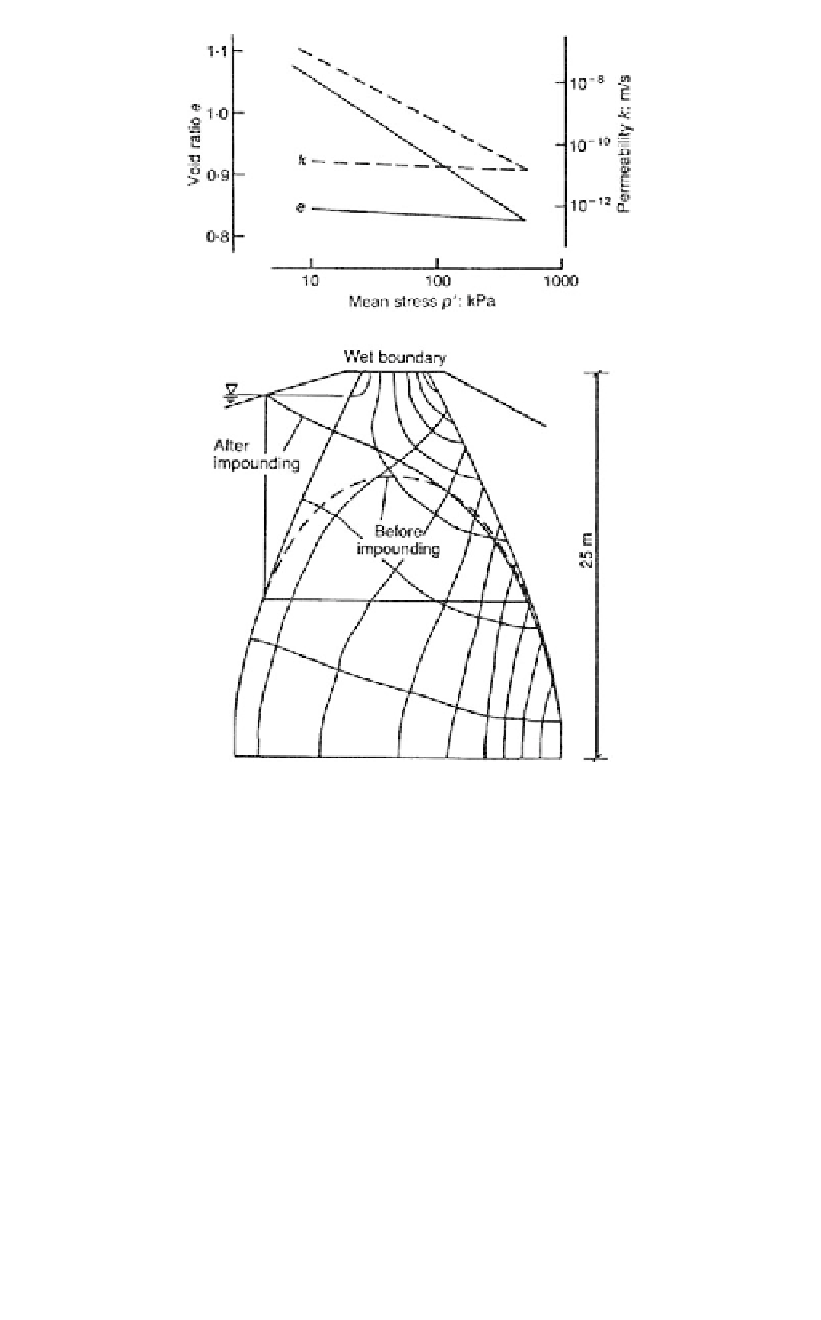Environmental Engineering Reference
In-Depth Information
Figure 11.16.
Seepage through a wide dam core predicted by coupled finite element analysis in two
dimensions: e
log p
and ln k
e (Vaughan, 1994).
99% of total)
and the seepage through the upstream part of the dam embankment passes directly to
the foundation.
Figure 11.15(a)
shows the flownet when the upper 3 m of alluvium
was compacted, resulting in a lower permeability. Figure 11.15(b) shows the effect of
vibroflotation of the foundation which by densification and mixing yields a lower
permeability. Lungga Dam was not constructed, due to the high overall cost of the
project.
It should be noted that for both Mardi and Lungga Dams, the critical failure surface
for slope stability passed through the foundation due to the high pore pressures.
(d)
Dependence of permeability on void ratio and effective stress
. The permeability of a
soil is dependent on the void ratio (e), and hence the mean effective stress (p
to no diaphragm cutoff. Seepage is largely through the foundation (
). This is
discussed at some length in Vaughan (1994) who shows that the effect of including this
phenomenon in seepage analyses is to give higher seepage gradients at the downstream
of the core as shown in Figure 11.16. It is apparent that this should be modelled if cor-
rect predictions of pore pressures are required.
(e)
Effects of partial saturation
. Le Bihan and Leroueil (2000) develop the concept of
St. Arnaud (1995) and demonstrate that the high gradients of pore pressure which
occur near the downstream of the core of some dams may be explained by the fact that

